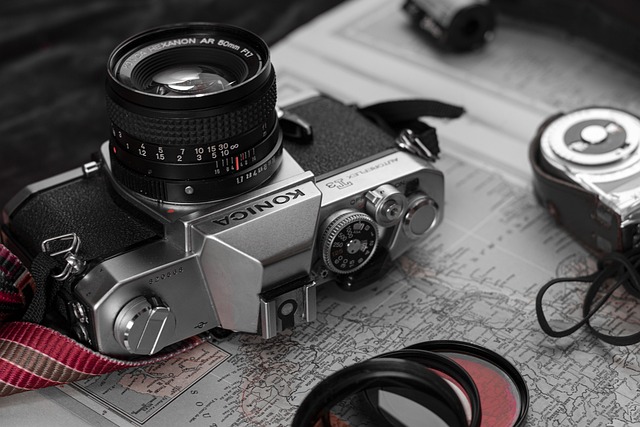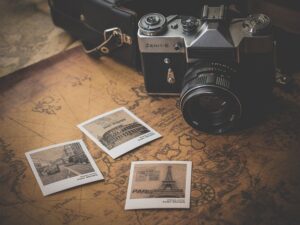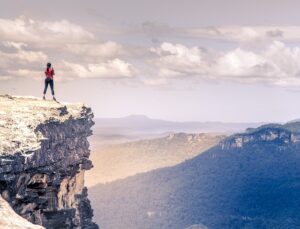Travel photography is a mesmerizing art form that enables people to share their own viewpoints with the world and capture the spirit of their travels. The ability to combine technical proficiency, artistic vision, and a good sense of location is essential for mastering the art of travel photography, whether you’re photographing tranquil landscapes, dynamic cities, or lively cultures. We’ll go into the essential components in this post that will help you produce photos that captivate viewers and take your travel photography to new heights.
Planning and Research:
For a good travel photography experience, careful preparation and study are necessary before setting off on any vacation. Not only will knowing the natural beauty, historical importance, and subtle cultural differences of your location enhance your trip overall, but it will also help you convey your narrative via photographs. Make a shot list of the famous sites, regional celebrations, and undiscovered treasures you want to photograph, but also keep an eye out for unplanned opportunities, which often result in the most memorable pictures.
Equipment Choice:

For trip photographers, selecting the appropriate gear is essential. While it may be tempting to travel with a large gear, while you’re on the go, convenience is essential. Purchase a high-quality camera that meets your demands and choose adaptable lenses that work well in a range of circumstances. Having a strong, lightweight tripod is essential for taking long-exposure or low-light photos. Don’t forget to bring extra batteries, memory cards, and a sturdy camera case to safeguard your equipment while traveling.
Knowing the Light:
Travel photography requires a basic understanding of light play. The tone and mood of your photos may be greatly influenced by the kind and direction of the light. Golden hours, which fall between dawn and sunset, provide your photos with a wonderful touch and soft, warm light that accentuates colors. You’ll get an acute eye for spotting chances to take breathtaking pictures by experimenting with various lighting setups.
Techniques of Composition:
Strong composition is the foundation of visually stunning travel images. Try experimenting with leading lines, framing, and the rule of thirds to produce visually appealing photos. Make sure your backdrop and foreground pieces advance the story as a whole by paying attention to them. Including locals in your photos may give them a more personal touch and provide them a cultural context. It’s okay to feel both down and elated while pursuing original viewpoints that distinguish your work.
The Sensitivity to Culture:
Travel photography must always respect the traditions and customs of the places it visits. Before taking pictures of someone, particularly in more private circumstances, get their consent. Interacting with residents and learning about their lifestyle can improve your photos and create deep relationships. Strive to present your subjects’ story in an ethical and truthful manner, and approach them with real interest.
Skills for Post-Processing:
Post-processing is the last stage in realizing your vision after you’ve taken your photos. Gain proficiency with picture editing tools to improve colors, adjust exposure, and polish your compositions. Strive, therefore, to strike a balance between authenticity and augmentation; stay away from over-the-top modification that warps the truth of your trip experiences.
Observation and Patience:
Travel photography often requires patience and an acute observational sense. When you take the time to really immerse yourself in the surroundings, some of the most intriguing moments happen. Remain still, take in the surroundings, and be prepared to record the unexpected. In street photography, where real events may happen in the blink of an eye, patience is especially important. Let the narrative develop organically, and be prepared to press the shutter at the right time.
Flexibility and Adaptability:
Plans for travel might be erratic, and circumstances can change quickly. For a vacation photographer, flexibility is essential. Accept unforeseen circumstances, large crowds, or difficulties as chances to expand your creative horizons. The most amazing photos may sometimes come from unforeseen circumstances. Remain adaptable, try out several strategies, and be willing to change your original plan of action when the situation calls for it.
Share a Story:
Excellent travel photography provides a coherent narrative rather than just showcasing isolated shots. Arrange your photos such that they tell a story that flows across the whole collection. Think on the order in which you took your shots, seeing how each picture enhances the others. By using a narrative technique, you give your art more depth and significance and make it easier for viewers to understand the larger picture of your travels.
Ongoing Education:
The area of photography is always changing, therefore learning about new methods and tools is crucial to becoming successful. Take part in online forums, go to courses, and go at the photos taken by well-known travel photographers. You may remain motivated and continue to push the limits of your creativity by consistently improving your talents and learning from others.
Make the Local Connection:
Make a connection with the locals if you want to really grasp the spirit of a location. Talk to them, find out about their experiences, and make an effort to comprehend their viewpoints. Developing connections offers doors to special picture possibilities and enhances your vacation experience. Locals may provide you advice, point you in the direction of undiscovered attractions, and even volunteer to be your subjects.
Reflective Editing:
One of the most important parts of trip photography is editing, but it must be done mindfully. Although photo retouching makes your photos seem better, remember to maintain the authenticity of the moments you’ve taken. Steer clear of over-processing and try to preserve the inherent charm and unique qualities of the places you’ve been. A thoughtful edit brings out the best in your images without taking away from the real moments you captured.

Try Different Viewpoints:
Try shooting from various angles as a way to add some flair to your trip photos. Strive to go beyond the apparent and discover original perspectives that present the location in a novel way. Changing up your viewpoints may enhance the variety and curiosity of your portfolio. Some examples of this include shooting through crowds, dropping down on the ground for an unusual picture, and photographing a cityscape from a rooftop.
Note the Specifics:
Travel photography often revolves on large-scale vistas and well-known sites, but don’t undervalue the importance of capturing the little things too. Focus on the patterns, hues, and textures that characterize the regional way of life. Street art, architectural features, traditional crafts, and commonplace items may all paint a vivid image of a place and convey captivating tales.
Adopt a minimalist mindset:
Sometimes little is more when it comes to taking great vacation photos. Reduce the complexity of your compositions to embrace the ideals of minimalism. To communicate a feeling of peace and beauty, concentrate on a single topic or the delicate interaction of several aspects. This method not only gives your photos a timeless aspect, but it also makes it possible for viewers to relate to the scene’s essential elements.
Look for Inspiration in Other Sources:
By taking inspiration from sources outside of the photographic industry, you may broaden your creative horizons. Investigate works of literature, music, art, and regional customs that are pertinent to the locations you visit. Incorporate these inspirations’ characteristics into your work to give your travel photography a distinct, multifaceted viewpoint that goes beyond the obvious.
Make Use of Online and Social Media Platforms:
You have a great chance to reach a worldwide audience by sharing your trip photos on websites and social media. You may share your work, get comments, and interact with other photographers on photo-related platforms such as Flickr, Instagram, and websites dedicated to photography. Make use of these venues not just to get visibility but also to inspire others and create a sense of community among photographers.
Ecological Awareness:
As a conscientious tourist and photographer, take into account the consequences of your activities on the environment. Be mindful of the local animals, habitats, and communities while taking pictures. Consider your carbon footprint and make an effort to improve the locations you visit. Utilize your pictures to spread the word about environmental challenges and encourage eco-friendly travel.
Remain Inspired and Driven:
To keep up a love for travel photography, one needs inspiration all the time. Take inspiration from photographers you like, visit photo shows, and become involved in the visual arts. Taking vacations from photography to pursue other hobbies might also help you find your creative spark again and approach photography from a different angle.
Let’s Honor Diversity:
Lastly, rejoice in the world’s variety as seen through your perspective. Capture the distinctive features of every location, emphasizing the beauty in their uniqueness. Your trip photos have the ability to unite people from different cultural backgrounds, advance understanding, and arouse their wanderlust. Seize the chance to share the diversity and complexity of the world via your visual storytelling.
In summary:
Travel photography is an exciting and fulfilling hobby that aims to communicate tales and evoke feelings in addition to just collecting images. You may become an expert in travel photography and produce a visually compelling journal of your adventures that appeals to people all around the globe by fusing technical proficiency with cultural sensitivity and an open mind. Thus, take your camera, go on exciting journeys, and let your lens to capture the allure of the locations you discover.




